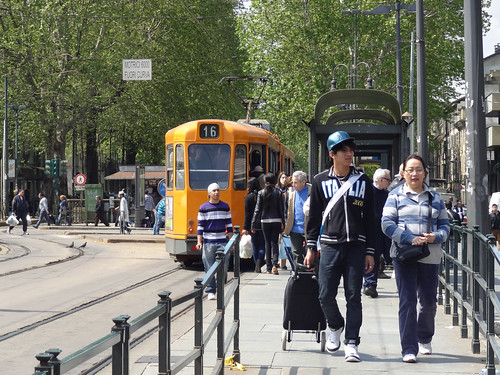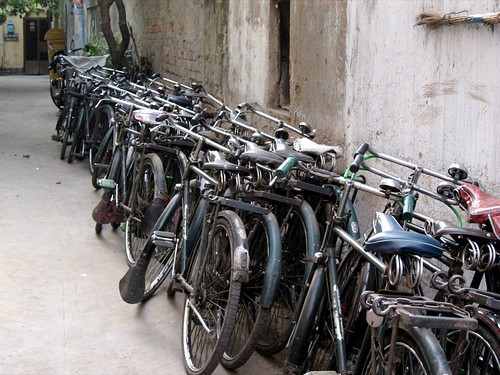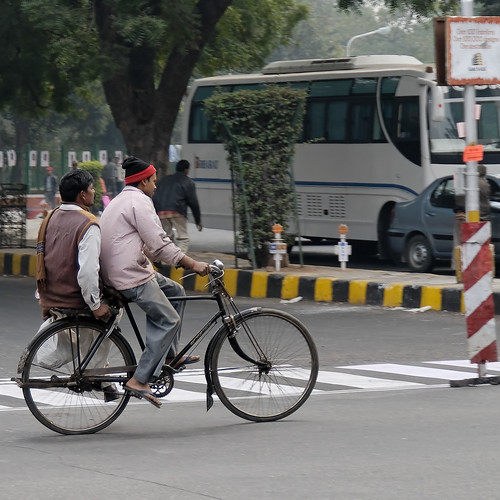"Three-quarters of Australians live in our 18 major cities
(that have populations over 100, 000). While Australians are
fortunate to enjoy some of the most liveable cities in the
world, our cities face a number of long term challenges: the
need to improve productivity growth; provide affordable and
accessible housing; create safe community spaces; meet the
needs of a growing and ageing population; ensure an
inclusive and cohesive society; and address the implications
of climate change. The way our cities develop to accommodate
future growth and change will be critical to maintaining
their status as some of the best cities in the world". - See more at: http://urbandesignaustralia.com.au/index.html#sthash.a9GKj7iB.dpuf
"Three-quarters of Australians live in our 18 major cities
(that have populations over 100, 000). While Australians are
fortunate to enjoy some of the most liveable cities in the
world, our cities face a number of long term challenges: the
need to improve productivity growth; provide affordable and
accessible housing; create safe community spaces; meet the
needs of a growing and ageing population; ensure an
inclusive and cohesive society; and address the implications
of climate change. The way our cities develop to accommodate
future growth and change will be critical to maintaining
their status as some of the best cities in the world". - See more at: http://urbandesignaustralia.com.au/index.html#sthash.EeOrsnIc.dpuf
"Three-quarters of Australians live in our 18 major cities
(that have populations over 100, 000). While Australians are
fortunate to enjoy some of the most liveable cities in the
world, our cities face a number of long term challenges: the
need to improve productivity growth; provide affordable and
accessible housing; create safe community spaces; meet the
needs of a growing and ageing population; ensure an
inclusive and cohesive society; and address the implications
of climate change. The way our cities develop to accommodate
future growth and change will be critical to maintaining
their status as some of the best cities in the world". - See more at: http://urbandesignaustralia.com.au/index.html#sthash.EeOrsnIc.dpuf
The 6th International Urban Design Conference will be held at the Novotel Sydney Olympic Park from Monday the
9th to Wednesday
11th of September 2013.
- See more at: http://urbandesignaustralia.com.au/index.html#sthash.EeOrsnIc.dpuf
The 6th International Urban Design Conference will be held at the Novotel Sydney Olympic Park from Monday the
9th to Wednesday
11th of September 2013.
- See more at: http://urbandesignaustralia.com.au/index.html#sthash.bxZHV1V0.dpuf
The 6th International Urban Design Conference will be held at the Novotel Sydney Olympic Park from Monday the
9th to Wednesday
11th of September 2013.
- See more at: http://urbandesignaustralia.com.au/index.html#sthash.bxZHV1V0.dpuf
The 6th International Urban Design Conference will be held at the Novotel Sydney Olympic Park from Monday the
9th to Wednesday
11th of September 2013.
- See more at: http://urbandesignaustralia.com.au/index.html#sthash.bxZHV1V0.dpuf
Confirmed &Keynote
Presenters
- Mrs Lucy Hughes Turnbull AO - Businesswoman and Company Director, Turnbull & Partners Limited, NSW (Confirmed)
- Mr Henry Ergas
- Senior Economic Adviser, Deloitte Australia & Professor of
Infrastructure Economics, SMART Infrastructure Facility, University of
Wollongong, NSW (Confirmed)
- Professor Peter Newman – Professor of Sustainability at Curtin University and Director of CUSP, WA (Confirmed)
- Ben Hewett - South Australian Government Architect and leads the Office for Design and Architecture SA (ODASA) (Confirmed)
- Mr Gordon Price – Director of the City Program at Simon Fraser University, CANADA (Confirmed)
- Mr Kobus Mentz – Director, Urbanismplus, Auckland, NEW ZEALAND (Confirmed)
- See more at: http://urbandesignaustralia.com.au/index.html#sthash.gSdMiZPT.dpuf
Politicians
"Three-quarters of Australians live in our 18 major cities
(that have populations over 100, 000). While Australians are
fortunate to enjoy some of the most liveable cities in the
world, our cities face a number of long term challenges: the
need to improve productivity growth; provide affordable and
accessible housing; create safe community spaces; meet the
needs of a growing and ageing population; ensure an
inclusive and cohesive society; and address the implications
of climate change. The way our cities develop to accommodate
future growth and change will be critical to maintaining
their status as some of the best cities in the world". - See more at: http://urbandesignaustralia.com.au/index.html#sthash.YtPvjmJ2.dpuf
The International Urban Design Conference was established in 2007.
Since then over 500 presenters have shared their knowledge in developing a range of themes including, Opportunistic Urban Design 2012, Resilience in Urban Design 2011, Designing the Future 2010, Waves of Change
- Cities at Crossroads 2009 and Survival: implementing tomorrow's city 2007. - See more at: http://urbandesignaustralia.com.au/index.html#sthash.a9GKj7iB.dpuf
"Three-quarters of Australians live in our 18 major cities
(that have populations over 100, 000). While Australians are
fortunate to enjoy some of the most liveable cities in the
world, our cities face a number of long term challenges: the
need to improve productivity growth; provide affordable and
accessible housing; create safe community spaces; meet the
needs of a growing and ageing population; ensure an
inclusive and cohesive society; and address the implications
of climate change. The way our cities develop to accommodate
future growth and change will be critical to maintaining
their status as some of the best cities in the world". - See more at: http://urbandesignaustralia.com.au/index.html#sthash.a9GKj7iB.dpuf
Important Dates
Call for Abstracts Open: 28th November 2012 (NOW OPEN)
Call for Abstracts Close: 14th May 2013
Notification to Presenters: 29th May 2013
Presenters Acceptance Close: 6th June 2013
Full Papers for Peer Review: 18th July 2013
Acceptance/Modification of full paper: 15th August 2013
Final academic-refereed papers due: 29th August 2013
The 6th International Urban Design Conference will be held at the Novotel Sydney Olympic Park from Monday the
9th to Wednesday
11th of September 2013.
- See more at: http://urbandesignaustralia.com.au/index.html#sthash.EeOrsnIc.dpuf
Read more
more conferences:


